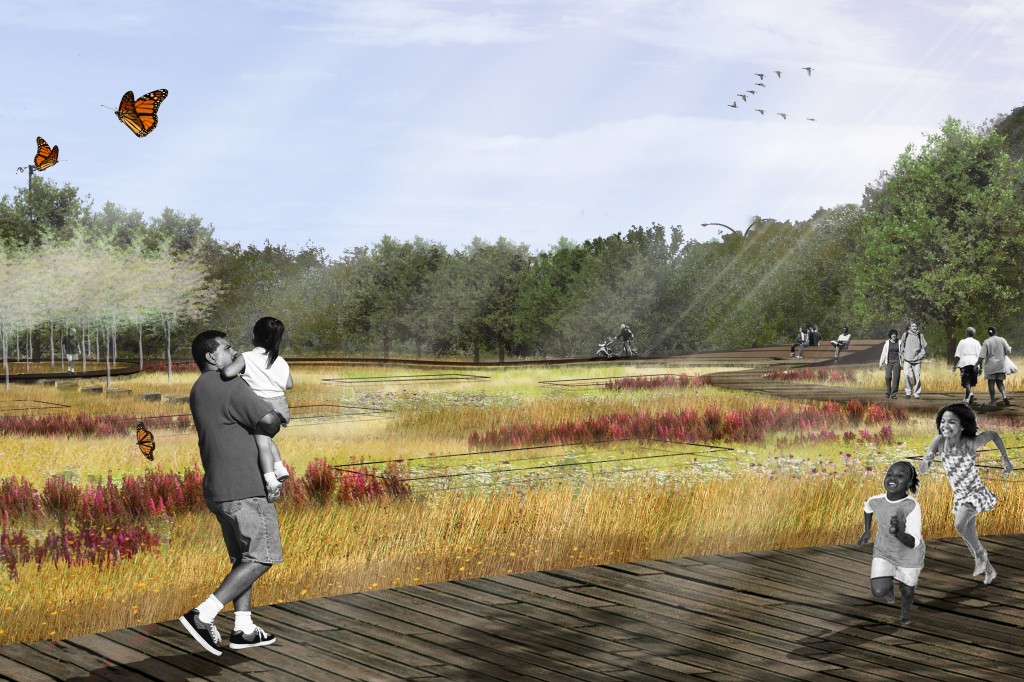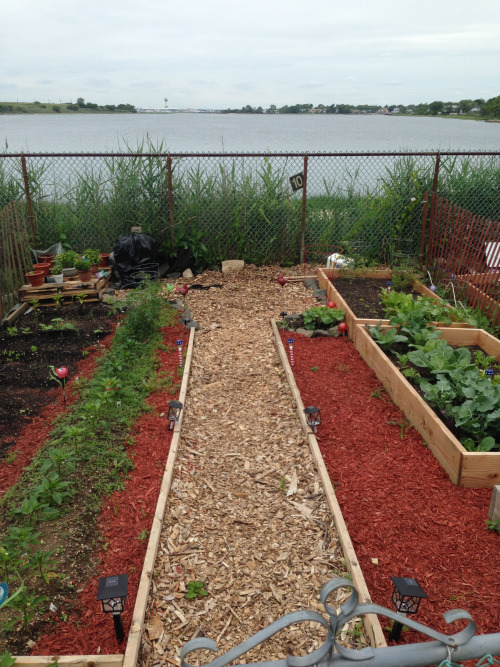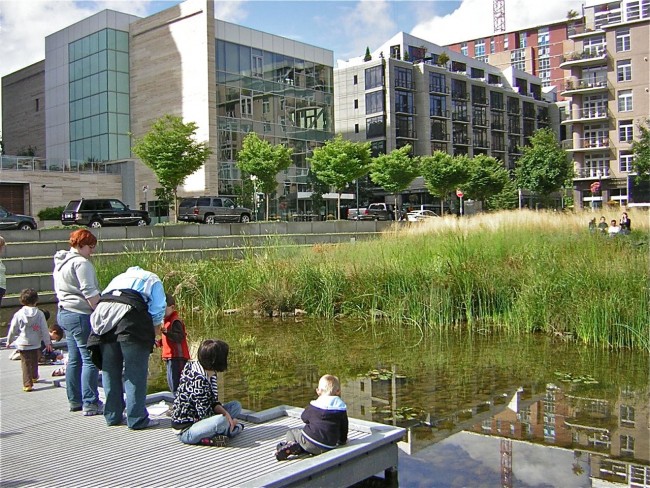Urban greening initiatives are in operation or in development around the globe. In a roundtable this past week from Nature of Cities, David Maddox reminds us “…The word landscape conveys a richer meaning that includes, of course, the aesthetics of nature and the out of doors, but also the organization and design or infrastructure, the biophysical and social services of ecosystems, the livability of communities, and the justice aspects of how our living environments are (or are not) democratically decided upon and created.”
Last week we briefly reviewed the history of the physical implementation of U.S. urban infrastructure. Effective technological innovations in transportation, communications, energy, and environmental services (water, wastewater, garbage disposal) enabled economic growth, and contributed to the physical transformation of city planning and development. Although hinted, we didn’t delve into the social or non-human benefits from infrastructure development. But one doesn’t need to search far to learn how sanitary systems dramatically changed the lives of urban dwellers.
As our global population moves into cities, we must continue to progress urban landscape design beyond physical infrastructure and direct costs. As residents and planners, we all have a responsibility to imagine and implement equitable and healthful landscapes. Here is a sample of infrastructure providing multiple, overlapping benefits.
Green and blue infrastructure in urban areas provide social, mental and physical health benefits.
Habitat and Food Security
Initiatives such as Pollinator Pathway promote the mosaic of habitats and biodiversity in our own backyards. In addition to the inherent value of species and biodiversity, increasing native plants in our cities provides food and shelter to native species and contributes to human food security. A recent study on the vital ecological services provided by four ‘wild’ insects in the U.S. estimates an annual value of at least $57 billion. The four insects studied provide pest control, pollination, dung burial and wildlife nutrition.

The Nature Sacred Award from the TKF Foundation supports The Naval Cemetery Project in Brooklyn. This urban landscape design incorporates a native plant meadow beneficial to pollinators and surrounded by an elevated boardwalk. The boardwalk winds around the hallowed ground of the former Naval Hospital Cemetery, allowing visitors to immerse themselves in the middle of an urban naturescape.
Microclimate Regulation and Human Health
Urban parks and vegetation, including green roofs and green walls, reduce the urban heat island effect. The most common urban ecosystem services data is measurement of tree canopy cover in cities and the resulting decrease in energy use (air conditioners, carbon emissions, fossil fuel use). In addition, urban forest canopy is correlated with a wealth of human benefits such as positive mood, lower blood pressure, better infant birth weight, and reduced cardiovascular illness.
Pollution Reduction and Community Gardens

Urban vegetation improves air quality, is linked to reduced mortality and improves perceived and actual general health. The distribution and accessibility of green space to different socio-economic groups, however, often reveals large asymmetries in cities contributing to inequity in both physical and mental health among groups. Community gardens and reclaimed vacant lots are perhaps the most prevalent example of efforts to confront inequity. These spaces also provide a wide range of ecosystem services in urban areas: pollination, food provision, biodiversity, recreation, local climate regulation, noise reduction, pollution reduction, social cohesion and reduced crime.
Water Regulation and Environmental Education
Trees, vegetation, and permeable soils in urban areas absorb or slow down rainfall. Stormwater designs using vegetation (such as bioswells) alleviates pressure from drainage systems and lowers the risk of surface water flooding. Intimate green spaces designed for a moment of contemplation and rest, Open Spaces Sacred Places, can be tucked in to these stormwater sites.
Tanner Springs is a water retention site serving a wide watershed area in Portland, Oregon. Water retentions tend to be sunken and gated off areas. The design team recognized this site as a potential resource for community space and provided a creative, restorative design. The space is accessible right down to the water, and can be used to cross to the other side of the block along a winding boardwalk. Boardwalk signage provides information on plants and wildlife living in the water; visitors often pause to peer into the waterscape for a closer look.

